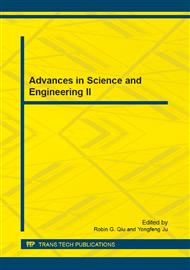p.643
p.649
p.655
p.660
p.667
p.673
p.678
p.684
p.688
Parameter Identification and Harmonic Analysis for EV Induction Motor Drive Systems
Abstract:
The asynchronous induction motor has obtained more applications in electric vehicle (EV) or hybrid EV drive systems. But, the parameter’s variations of the motor and the harmonics of the voltage source inverter are the two problems influence control performance of EV Drive Systems. Above all, this Paper discusses several main factors which influence harmonics elimination, and then, describes an effective online method for identifying both stator and rotor resistance. The novel method uses Suboptimal Multiple Fading Extended Kalman Filter (SMFEKF) which is a kind of strong tracking filters can accomplish Parameter Identification. An important advantage of this method is that it offers a parallel search way can overcome local optima so as to find the globally optimal solution. Together with harmonic elimination Algorithm which improved the power factor of the drive and weaken the injected low-order harmonics to the induction motor, robust speed control of induction motor can obtained easily. The simulative results confirm that the proposed method has efficiency to EV Drive Systems.
Info:
Periodical:
Pages:
667-672
Citation:
Online since:
October 2011
Authors:
Keywords:
Price:
Сopyright:
© 2012 Trans Tech Publications Ltd. All Rights Reserved
Share:
Citation:


